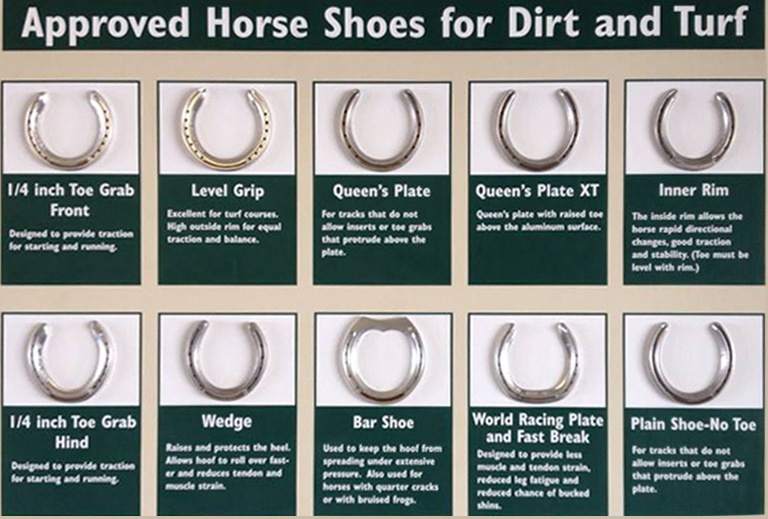Horses

A deafening gun blast sent excited settlers on horseback racing to stake their claims during the Oklahoma Land Run on April 22, 1889. A hundred or more years before that, Kiowa, Comanche, Cheyenne and Pawnee hunters rode horses into Oklahoma, following the bison herds. Oklahoma could not have been settled without horses. People had to ride long distances just to find water.
Horses helped settle our state, and they are still important to Oklahomans today. Only California and Texas have more horses than Oklahoma. In fact, there are 325,000 horses in the state, one for every ten Oklahomans.
Learning Activities
A Handy Measure
PreK-2 Math
Early horse traders found it was easier to use their hands to measure horses than to carry around measuring sticks. They would count hand-widths from the ground to the horse's withers. The withers is the high part of the horse's back, between the shoulder blades. A man's hand is generally about four inches wide. A horse is generally about 14.2 hands, 14 hands and two inches, or taller. Anything shorter than that is considered a pony. In this lesson students practice measuring with standard units of measure and benchmarks.
A Horse of a Different Color
Grades PreK-2 Art
Just like people have different hair colors, horses have different coat colors. In this lesson students explore the diversity of horse coat colors, reproduce an existing color and develop and name a new color.
No Foot, No Horse
Grades 2-4 ELA
Every athlete needs a good pair of shoes. The type of shoe an athlete wears depends on the sport he or she plays. The same is true for equine athletes. The type of shoe a horse needs depends on the sport in which it will be involved. In this lesson, students will match the type of horseshoe with the horse activity and write descriptive paragraphs about their own shoes.
Horseshoe Math
Grades 2-4 Math
Students will solve word problems related to horseshoes, classify a pile of shoes and perform other mathematical operations with shoes.
 Poster hanging on the wall at Keeneland Race Track in Kentucky's Bluegrass Region.
Poster hanging on the wall at Keeneland Race Track in Kentucky's Bluegrass Region.
Additional Resources
Books
Bowers, Nathan, and Katie Bowers Reiff, 4-H Guide to Training Horses, Voyageur, 2001.
Grades 6 and up
Basic training techniques and riding skills such as mounting, saddling, reining, stopping and starting. Strong emphasis on safety and common sense.
Carle, Eric, The Artist Who Painted a Blue Horse, Philomel, 2011.
Grades PreK-3
Every child has an artist inside, and this picture book will help let it out. The artist in the book paints the world as he sees it, just like a child. Filled with some of the most colorful animals of Eric Carle's career.
Clutton-Brock, Juliet, Eyewitness: Horse, DK, 2000.
Grades 3-6
Each double-page spread contains a brief theme paragraph that describes the topic, along with captioned photos of horses, reproductions of the animal found in art and artifacts, and related equestrian gear. Subjects include history, anatomy, physiology, breeds, colors, and uses of horses, asses, mules, and zebras.
Gibbons, Gail, Horses, Holiday House, 2003.
Grades K-3
A historical overview of Eohippus' evolution and horse appearance, disappearance and reappearance on the North American continent introduces the book. Discussion of the three basic horse sizes, characteristics and terminology (withers, hands, flank, quarters, fetlock), a double page spread about horse feet and horseshoes, followed by a discussion of gait, teeth, and habits suits the curious as well as report writers. Birth of a foal and its growth into a yearling is also covered. Throughout the full color illustrations, Gibbons uses various breeds of horse to discuss general characteristics and labels the breed so that young readers can learn names or ignore them in pursuit of generalities. A table of some well-known purebred horses and another of entertainment events horses typically appear in round out the information.
Goble, Paul, The Girl Who Loved Wild Horses, Atheneum, 2001.
Grades K-2
For most people, being swept away in a horse stampede during a raging thunderstorm would be a terrifying disaster. For the young Native American girl in Paul Gobl''s 1979 Caldecott-winning masterpiece, The Girl Who Loved Wild Horses,it is a blessing. Although she loves her people, this girl has a much deeper, almost sacred, connection to her equine friends. The storm gives her the opportunity to fulfill her dream -to live in a beautiful land among the wild horses she loves. With brilliant, stylized illustrations and simple text, Paul Goble tells the story of a young woman who follows her heart and the family that respects and accepts her uniqueness.
McCully, Emily, Wonder Horse: The True Story of the World's Smartest Horse, Henry Holt & Co., 2010.
Grades PreK-2
Bill Key, born a slave, overcame many obstacles to become a veterinarian and a business man. Key's horse, Jim, is eventually recognized as the world's smartest horse and accompanied Key in his work with the Society for the Prevention of Cruelty to Animals.
Milbourne, Anne, Horses and Ponies, Usborne, 2004.
Grades 1-3
This 32-page book provides information about horses and ponies physically and behaviorally. The text is accompanied by both photographs and illustrations to depict specific topics and traits. Includes a glossary.
Pitts, Zachary, The Pebble First Guide to Horses, Pebble, 2008.
Grades 2-8
Thirteen breeds of horses commonly found in the US are identified in a photograph and then information is provided about height, weight, colors, origin, uses and facts. Includes a glossary.
Additional Resources
- Agriculture in Art
- The Brush Harrow, 1865 by Winslow Homer
- The Last Furrow, 1878 by Winslow Homer
- A Mexican Vaquero, 1890 by Frederic Remington
- Plowing, 1885 by Anton Mauve
- Plowing a Firebreak by Augusta Metcalfe
- Running From Fire, 1949 by Augusta Metcalfe
- The Shaw Roundup by Augusta Metcalfe (Oklahoma State Capital Art Collection)
- Spring Plowing, 1916 by Edvard Munch
- The Stampede, 1908 by Frederic Remington
